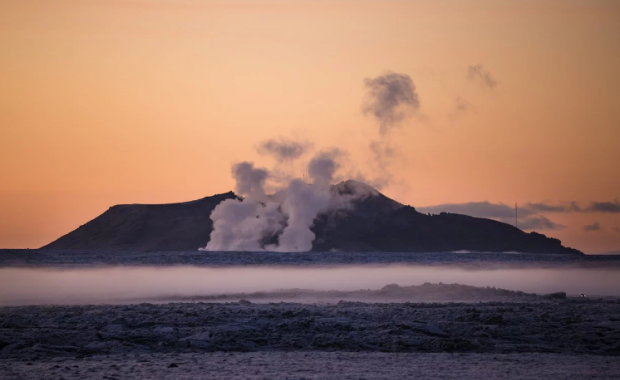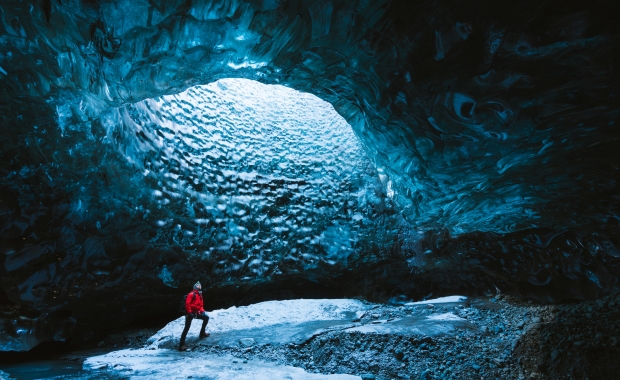By Karl E. H. Seigfried
In 1972, Icelandic farmer-poet Sveinbjörn Beinteinsson founded an organization for the practice of Ásatrú (“Æsir Faith”), a religion dedicated to Old Norse gods such as Odin and Thor. Beginning with a mere dozen adherents, the Ásatrúarfélagið (“Æsir Faith Fellowship”) now has over three thousand members, and Ásatrú is Iceland’s largest non-Christian religion.

In early 2015, news that the group was building Iceland’s first modern hof (Heathen temple) went viral. In May, Gay Iceland posted a feature on the popularity of Iceland for same-sex destination weddings officiated by the Ásatrúarfélagið. These articles brought some unwanted attention to the Heathen group on social media.
A small number of reactionary non-Icelandic Heathens posted anti-gay comments on the organization’s Facebook page. Administrators blocked the commenters and posted a statement in English: “Ásatrúarfélagið is an Icelandic religious association, subject to Icelandic laws. Discussions that do not adhere to our values and the laws of the land are not tolerated on our Facebook page.”
News items appeared detailing threats against the hof, including what Ásatrúarfélagið leader Hilmar Örn Hilmarsson called “gushes of hate-mail from abroad” and alleged plans by American and German Heathen groups to perform a blood-ritual in the Icelandic temple to “re-consecrate” it and “correct” the religious practice of the Icelanders.
Media stories treating these outliers as serious voices in the American and German Heathen communities promote the idea, perhaps unintentionally, that Icelandic Ásatrú is wholly and without exception progressive and liberal, while Heathenry in America and Germany is largely composed of bigoted extremists. This simply isn’t so.
Looking to different pasts
Although Icelandic followers of Ásatrú have a high media profile, their numbers are dwarfed by the Heathen community in the United States. According to results of the Worldwide Heathen Census that I conducted at the end of 2013, there are nearly eight times as many followers of the religion in America as there are in Iceland. Germany also has a higher total number of adherents than Iceland.
Unlike Iceland, where one religious organization includes nearly all Heathens, America and Germany have a large number of national organizations, regional associations, local groups and lone practitioners. No organization is dominant and no one person is the public face of Heathenry, as is the case in Iceland. Icelandic-style Ásatrú is only one of many varieties of Heathenry practiced; Theodism, for example, centers on the beliefs and culture of pre-conversion Anglo-Saxons.
The Ásatrúarfélagið focuses on Icelandic heritage. Given the nation’s rich literary past and mostly monocultural society, its members can look to purely Icelandic sources for information on pre-Christian religion, mining the medieval Eddas and sagas for texts to be used in blóts (religious rituals) and for models of how these rituals may be performed. Members gather to discuss Old Icelandic poems, and several leaders of the organization actively participate in re-enactment of music, crafts and fighting techniques of Iceland’s early settlers.
American Heathens tend to be more omnivorous in their studies. This is understandable, in light of the great cultural diversity of American society. American Heathens incorporate elements from Iceland’s Eddas and sagas into their practice, but they also delve into literary sources from England, Denmark, Germany and the Roman Empire. They are intensely interested in archeological discoveries throughout Scandinavia, the European continent and the British Isles. Many follow the latest academic scholarship in historical and religious studies.
German Heathens are interested in Icelandic materials, but largely turn to the pre-Christian history of their own region for inspiration and guidance. Written accounts of Germanic Heathens include Latin texts by Caesar and Tacitus; archeological evidence stretches back hundreds of years BCE. Andreas Zautner, a member of the German Heathen organization the Eldaring, stresses the importance of local history: “Specific historical Heathen events play an important role for Heathens in Germany. One event common to most Germans is the defeat of the Roman legions by Hermann the Cherusker. The two-thousandth anniversary of the Battle of the Teutoburg Forest was celebrated by German Heathens only a few years ago.”
The mainstream and the fringe
Far from representing American and German Heathenry, individuals who engaged in online bullying of the Ásatrúarfélagið are isolated extremists. Despite media focus on the far-right fringe, the majority of practitioners in America and Germany are opposed to such attitudes. Websites of most groups include statements denouncing discrimination based on gender, race or sexual orientation.
Sociologist Jennifer Snook’s new book, American Heathens: The Politics of Identity in a Pagan Religious Movement, contains data on “political values” of practitioners. On marriage equality, American Heathens are more progressive than U.S. society as a whole; seventy-seven percent of Heathens support gay marriage rights, compared to only fifty-five percent of the overall population. Within the American Heathen community, those who self-identify as liberals or moderates outnumber conservatives nearly five to three.

German Heathens are particularly sensitive to appropriation of pre-Christian religious symbols by reactionary groups, given the Third Reich’s use of Heathen imagery. The Rabenclan organization’s “Ariosophie Projekt” has long detailed its research exposing right-wing elements attempting to co-opt Heathenry. Another group, Nornirs Ætt, has become so uncompromisingly dedicated to the idea of “Antifa” (anti-fascism) that they are left of even liberal Heathens.
One person who harassed the Ásatrúarfélagið over gay marriage on its Facebook page also repeatedly commented on Iceland Insider’s article on hate-mail sent to the organization. The self-proclaimed Hawaiian Odinist seemed to use at least three different aliases to praise her own comments and repeatedly link to her website featuring slander of Jews, African-Americans and immigrants.
It remains unclear why a Hawaiian Odinist should have any say in the practices of an Ásatrú organization over six thousand miles away, or why a Hawaiian’s personal prejudices should impact legal decisions in the land of the sagas. What is clear is that a single reactionary individual can get a great amount of attention by being unrelentingly obnoxious online, even if her views are completely out of step with the mainstream of the religion.
Locality and diversity
In reaction to statements from the “crazies and trolls of the internet,” Hilmar Örn told Iceland Insider that the Ásatrúarfélagið “will not tolerate some foreign reactionaries coming here to tell us how to practice our faith.” Andreas Zautner says the same of German Heathens: “No one is expecting that some kind of clerical authority from a foreign country should give religious guidance for German Heathens.”

The reactionaries have misunderstood “the American myth,” according Steven T. Abel, Steersman of the Troth, a national Heathen group in the United States. “Think for yourself, make your own path, and find your own friends,” he says. Freedom is important to us. The hard lesson is that some view freedom as being good for themselves; anyone else's freedom they're not too sure about. Some people learn and grow into wider views; others don't.”
In opposition to the “troll” insistence that outsiders determine Icelandic practice, most American and German Heathens emphasize the religion’s locality – a stance in keeping with Ásatrú’s emphasis on community and respect for one’s natural environment.
Haimo Grebenstein, Ewart (religious steward) for Germany’s Verein für Germanisches Heidentum (Association for Germanic Heathenry), believes that local-focus groups can support each other, yet still maintain independent identities. “Iceland is different from Germany, and that’s fine,” he says. The Icelanders “were probably the first in Europe in terms of modern Ásatrú, they are the largest organization by numbers, and in building the hof they are again up front. That is indeed inspiring for other groups, but rather in a public relations context than a religious one.”
Josh Heath, co-director of Open Halls Project, an American Heathen organization currently advocating for recognition of Heathenry in the U.S. Army, stresses that local variation goes hand-in-hand with respect for other practitioners: “Icelandic Heathens do Heathenry differently than Heathens in the United States. This is good, because we recognize the value of localizing ourselves and understanding the Heathen worldview through the world, society and community we live within. We can support and defend others, but we can do so in a way that respects the diversity within a polytheistic worldview.
In the age of “crazies and trolls,” a little respect would be a wonderful thing.
Dr. Karl E. H. Seigfried is the author of The Norse Mythology Blog.
By Karl E. H. Seigfried
In 1972, Icelandic farmer-poet Sveinbjörn Beinteinsson founded an organization for the practice of Ásatrú (“Æsir Faith”), a religion dedicated to Old Norse gods such as Odin and Thor. Beginning with a mere dozen adherents, the Ásatrúarfélagið (“Æsir Faith Fellowship”) now has over three thousand members, and Ásatrú is Iceland’s largest non-Christian religion.

In early 2015, news that the group was building Iceland’s first modern hof (Heathen temple) went viral. In May, Gay Iceland posted a feature on the popularity of Iceland for same-sex destination weddings officiated by the Ásatrúarfélagið. These articles brought some unwanted attention to the Heathen group on social media.
A small number of reactionary non-Icelandic Heathens posted anti-gay comments on the organization’s Facebook page. Administrators blocked the commenters and posted a statement in English: “Ásatrúarfélagið is an Icelandic religious association, subject to Icelandic laws. Discussions that do not adhere to our values and the laws of the land are not tolerated on our Facebook page.”
News items appeared detailing threats against the hof, including what Ásatrúarfélagið leader Hilmar Örn Hilmarsson called “gushes of hate-mail from abroad” and alleged plans by American and German Heathen groups to perform a blood-ritual in the Icelandic temple to “re-consecrate” it and “correct” the religious practice of the Icelanders.
Media stories treating these outliers as serious voices in the American and German Heathen communities promote the idea, perhaps unintentionally, that Icelandic Ásatrú is wholly and without exception progressive and liberal, while Heathenry in America and Germany is largely composed of bigoted extremists. This simply isn’t so.
Looking to different pasts
Although Icelandic followers of Ásatrú have a high media profile, their numbers are dwarfed by the Heathen community in the United States. According to results of the Worldwide Heathen Census that I conducted at the end of 2013, there are nearly eight times as many followers of the religion in America as there are in Iceland. Germany also has a higher total number of adherents than Iceland.
Unlike Iceland, where one religious organization includes nearly all Heathens, America and Germany have a large number of national organizations, regional associations, local groups and lone practitioners. No organization is dominant and no one person is the public face of Heathenry, as is the case in Iceland. Icelandic-style Ásatrú is only one of many varieties of Heathenry practiced; Theodism, for example, centers on the beliefs and culture of pre-conversion Anglo-Saxons.
The Ásatrúarfélagið focuses on Icelandic heritage. Given the nation’s rich literary past and mostly monocultural society, its members can look to purely Icelandic sources for information on pre-Christian religion, mining the medieval Eddas and sagas for texts to be used in blóts (religious rituals) and for models of how these rituals may be performed. Members gather to discuss Old Icelandic poems, and several leaders of the organization actively participate in re-enactment of music, crafts and fighting techniques of Iceland’s early settlers.
American Heathens tend to be more omnivorous in their studies. This is understandable, in light of the great cultural diversity of American society. American Heathens incorporate elements from Iceland’s Eddas and sagas into their practice, but they also delve into literary sources from England, Denmark, Germany and the Roman Empire. They are intensely interested in archeological discoveries throughout Scandinavia, the European continent and the British Isles. Many follow the latest academic scholarship in historical and religious studies.
German Heathens are interested in Icelandic materials, but largely turn to the pre-Christian history of their own region for inspiration and guidance. Written accounts of Germanic Heathens include Latin texts by Caesar and Tacitus; archeological evidence stretches back hundreds of years BCE. Andreas Zautner, a member of the German Heathen organization the Eldaring, stresses the importance of local history: “Specific historical Heathen events play an important role for Heathens in Germany. One event common to most Germans is the defeat of the Roman legions by Hermann the Cherusker. The two-thousandth anniversary of the Battle of the Teutoburg Forest was celebrated by German Heathens only a few years ago.”
The mainstream and the fringe
Far from representing American and German Heathenry, individuals who engaged in online bullying of the Ásatrúarfélagið are isolated extremists. Despite media focus on the far-right fringe, the majority of practitioners in America and Germany are opposed to such attitudes. Websites of most groups include statements denouncing discrimination based on gender, race or sexual orientation.
Sociologist Jennifer Snook’s new book, American Heathens: The Politics of Identity in a Pagan Religious Movement, contains data on “political values” of practitioners. On marriage equality, American Heathens are more progressive than U.S. society as a whole; seventy-seven percent of Heathens support gay marriage rights, compared to only fifty-five percent of the overall population. Within the American Heathen community, those who self-identify as liberals or moderates outnumber conservatives nearly five to three.

German Heathens are particularly sensitive to appropriation of pre-Christian religious symbols by reactionary groups, given the Third Reich’s use of Heathen imagery. The Rabenclan organization’s “Ariosophie Projekt” has long detailed its research exposing right-wing elements attempting to co-opt Heathenry. Another group, Nornirs Ætt, has become so uncompromisingly dedicated to the idea of “Antifa” (anti-fascism) that they are left of even liberal Heathens.
One person who harassed the Ásatrúarfélagið over gay marriage on its Facebook page also repeatedly commented on Iceland Insider’s article on hate-mail sent to the organization. The self-proclaimed Hawaiian Odinist seemed to use at least three different aliases to praise her own comments and repeatedly link to her website featuring slander of Jews, African-Americans and immigrants.
It remains unclear why a Hawaiian Odinist should have any say in the practices of an Ásatrú organization over six thousand miles away, or why a Hawaiian’s personal prejudices should impact legal decisions in the land of the sagas. What is clear is that a single reactionary individual can get a great amount of attention by being unrelentingly obnoxious online, even if her views are completely out of step with the mainstream of the religion.
Locality and diversity
In reaction to statements from the “crazies and trolls of the internet,” Hilmar Örn told Iceland Insider that the Ásatrúarfélagið “will not tolerate some foreign reactionaries coming here to tell us how to practice our faith.” Andreas Zautner says the same of German Heathens: “No one is expecting that some kind of clerical authority from a foreign country should give religious guidance for German Heathens.”

The reactionaries have misunderstood “the American myth,” according Steven T. Abel, Steersman of the Troth, a national Heathen group in the United States. “Think for yourself, make your own path, and find your own friends,” he says. Freedom is important to us. The hard lesson is that some view freedom as being good for themselves; anyone else's freedom they're not too sure about. Some people learn and grow into wider views; others don't.”
In opposition to the “troll” insistence that outsiders determine Icelandic practice, most American and German Heathens emphasize the religion’s locality – a stance in keeping with Ásatrú’s emphasis on community and respect for one’s natural environment.
Haimo Grebenstein, Ewart (religious steward) for Germany’s Verein für Germanisches Heidentum (Association for Germanic Heathenry), believes that local-focus groups can support each other, yet still maintain independent identities. “Iceland is different from Germany, and that’s fine,” he says. The Icelanders “were probably the first in Europe in terms of modern Ásatrú, they are the largest organization by numbers, and in building the hof they are again up front. That is indeed inspiring for other groups, but rather in a public relations context than a religious one.”
Josh Heath, co-director of Open Halls Project, an American Heathen organization currently advocating for recognition of Heathenry in the U.S. Army, stresses that local variation goes hand-in-hand with respect for other practitioners: “Icelandic Heathens do Heathenry differently than Heathens in the United States. This is good, because we recognize the value of localizing ourselves and understanding the Heathen worldview through the world, society and community we live within. We can support and defend others, but we can do so in a way that respects the diversity within a polytheistic worldview.
In the age of “crazies and trolls,” a little respect would be a wonderful thing.
Dr. Karl E. H. Seigfried is the author of The Norse Mythology Blog.






